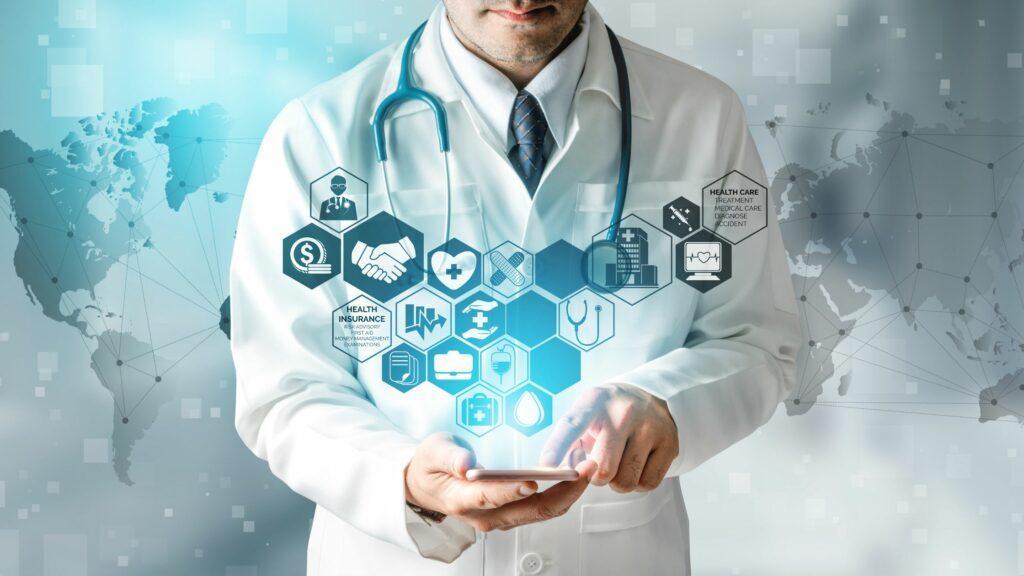The healthcare industry has seen a significant transformation in recent years, with the rise of telemedicine and remote patient monitoring. These technologies have revolutionized the way healthcare is delivered, allowing patients to receive medical care from the comfort of their own homes. With the increasing demand for convenient and accessible healthcare, telemedicine and remote patient monitoring have become essential tools for healthcare providers and patients alike.
Telemedicine, also known as telehealth, refers to the use of technology to provide healthcare services remotely. This can include virtual consultations with healthcare providers, remote monitoring of patients’ vital signs, and the use of mobile health apps to track and manage health conditions. Remote patient monitoring, on the other hand, involves the use of medical devices to monitor patients’ health outside of traditional healthcare settings. These devices can track vital signs, such as blood pressure, heart rate, and blood glucose levels, and transmit this data to healthcare providers for analysis.
The adoption of telemedicine and remote patient monitoring has been driven by several factors, including advances in technology, changes in healthcare delivery models, and the increasing demand for convenient and accessible healthcare. These technologies have the potential to improve access to care, reduce healthcare costs, and improve patient outcomes.
One of the key benefits of telemedicine and remote patient monitoring is the ability to provide healthcare services to patients who may have difficulty accessing traditional healthcare settings. This includes individuals who live in rural or underserved areas, those with mobility limitations, and those who may have difficulty traveling to healthcare facilities. By using telemedicine and remote patient monitoring, these patients can receive the care they need without having to leave their homes.
In addition to improving access to care, telemedicine and remote patient monitoring can also help to reduce healthcare costs. By allowing patients to receive care remotely, healthcare providers can reduce the need for in-person visits, which can be costly and time-consuming. This can lead to cost savings for both patients and healthcare providers, as well as reducing the burden on healthcare facilities.
Furthermore, telemedicine and remote patient monitoring have the potential to improve patient outcomes by enabling more frequent monitoring and management of chronic health conditions. For example, patients with diabetes can use remote monitoring devices to track their blood glucose levels and receive real-time feedback from healthcare providers. This can help to improve the management of their condition and reduce the risk of complications.
The COVID-19 pandemic has further accelerated the adoption of telemedicine and remote patient monitoring, as healthcare providers have had to find alternative ways to deliver care while minimizing the risk of exposure to the virus. This has led to a rapid expansion of telehealth services, with many healthcare providers offering virtual consultations and remote monitoring to their patients.
As telemedicine and remote patient monitoring continue to gain traction, there are several challenges that need to be addressed to ensure their widespread adoption and effectiveness. One of the key challenges is ensuring the security and privacy of patient data, as the transmission of sensitive health information over digital networks can pose a risk of unauthorized access. Healthcare providers and technology companies must work together to implement robust security measures to protect patient data and ensure compliance with privacy regulations.
Another challenge is ensuring that telemedicine and remote patient monitoring are accessible to all patients, including those who may have limited access to technology or digital literacy. Healthcare providers must work to bridge the digital divide and provide support to patients who may need assistance in using telehealth services.
Despite these challenges, the potential benefits of telemedicine and remote patient monitoring are clear. These technologies have the potential to revolutionize the way healthcare is delivered, improving access to care, reducing healthcare costs, and improving patient outcomes. As technology continues to advance, telemedicine and remote patient monitoring will play an increasingly important role in the future of healthcare, enabling patients to receive the care they need, no matter where they are.


